5 Modernist Cuisine Techniques to Transform Your Cooking
Modernist cuisine redefines cooking with science and tech, introducing innovative techniques like sous vide, spherification, and foams.
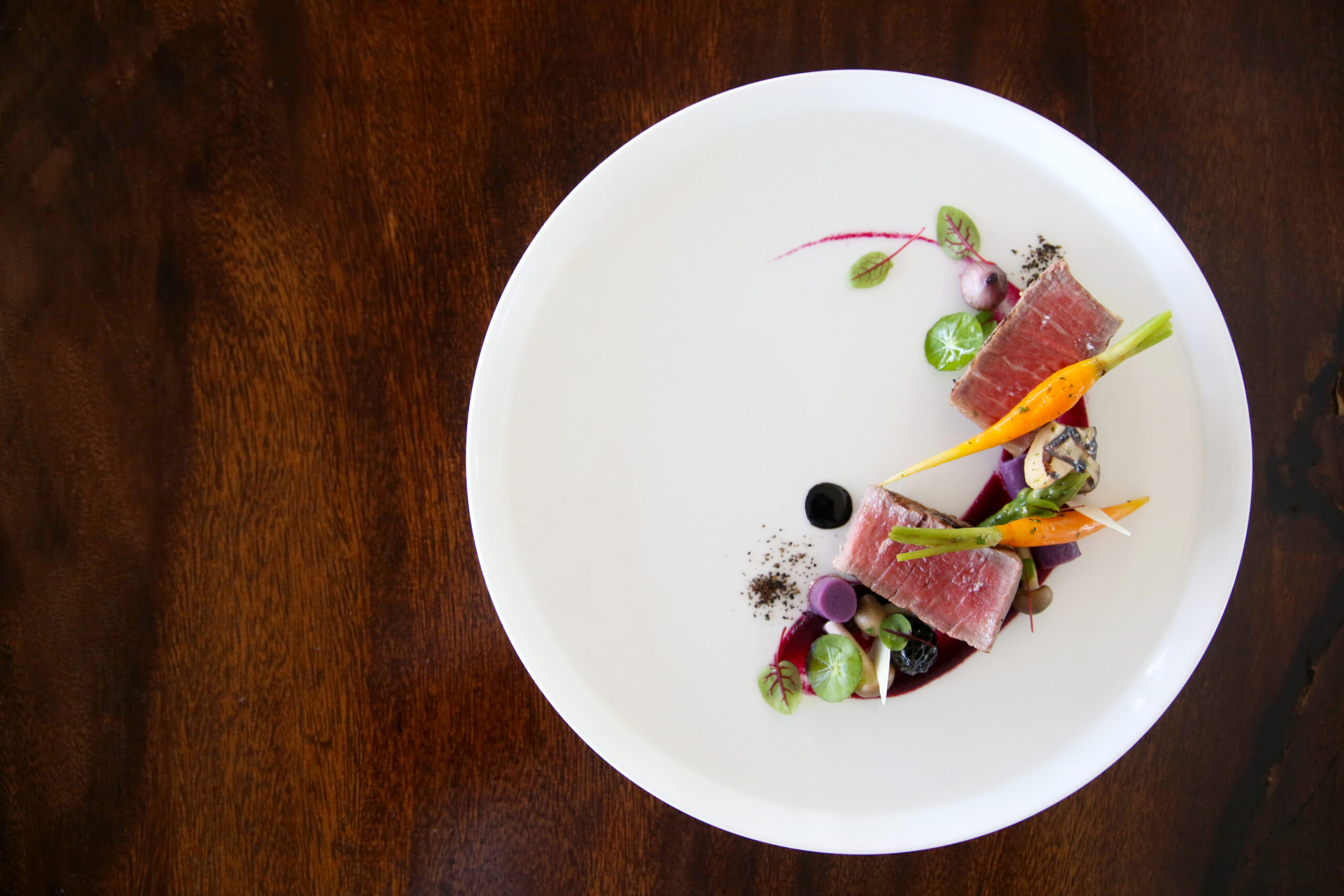
Modernist cuisine transforms traditional cooking techniques using science and technology to create innovative dishes. You’ll discover flavors, textures, and presentations that push the boundaries of culinary art.
Disclosure: As an Amazon Associate, this site earns from qualifying purchases. Thank you!
Key Techniques in Modernist Cuisine
Modernist cuisine reshapes the way we think about cooking by using science and technology to innovate.
Sous Vide Cooking
Cook food sealed in airtight bags in a water bath at precise temperatures. This method ensures even cooking and retains moisture. Use it for meats, vegetables, and desserts.
Spherification and Gelification
Transform liquids into spheres or gels. Spherification turns liquids into small, caviar-like balls using alginate and calcium. Gelification uses gelling agents to create innovative textures like spaghetti and sheets.
Foam and Emulsification
Create airy textures and stable mixtures. Foams involve whipping air into liquids using agents like lecithin or siphons. Emulsification blends two unmixable liquids, like oil and water, for sauces and dressings.
Essential Tools for Modernist Cuisine
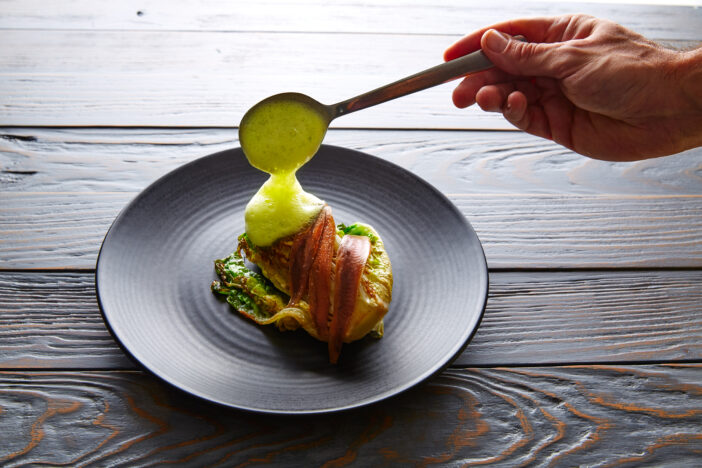
When diving into modernist cuisine, having the right tools is crucial for success. Here are the must-haves:
Precision Cookers and Water Baths
Precision cookers and water baths are indispensable. They ensure your food cooks at exact temperatures, giving you perfect textures every time. Sous vide machines maintain a steady temperature, ideal for meats and delicate items like fish.
Syringe Needles and Pipettes
Syringe needles and pipettes are vital for molecular gastronomy. They allow you to create precise drops and lines for spherification and gelification. These tools help in adding artistic flair while ensuring portion control.
Scales and Thermometers
Scales and thermometers are essential for accuracy. Precision scales measure ingredients to the gram, crucial for chemical reactions. Instant-read thermometers ensure your dishes reach the desired temperature, maintaining safety and consistency.
Top Ingredients Used in Modernist Cuisine
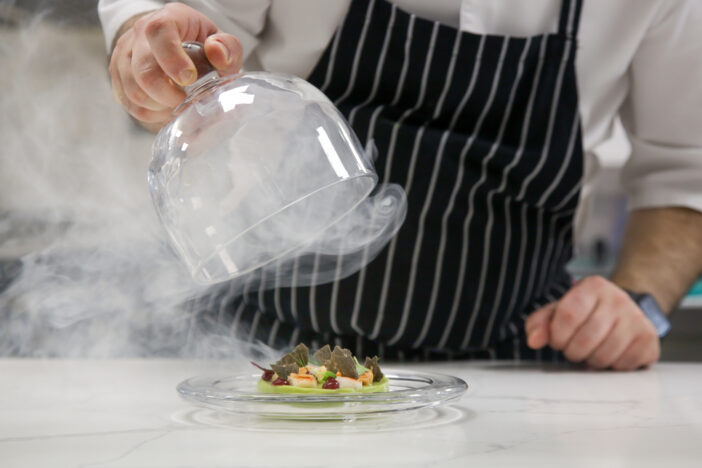
Modernist cuisine thrives on innovative ingredients to push culinary boundaries. Here’s a rundown of some key elements.
Hydrocolloids
Hydrocolloids form the backbone of many modernist techniques.
- Xanthan Gum: Stabilizes emulsions and thickens liquids without altering flavor.
- Guar Gum: Enhances texture by increasing viscosity in cold and hot preparations. Ideal for sauces and dairy products.
Liquid Nitrogen
Liquid nitrogen revolutionizes texture and flavor.
- Cryo-cooking: Flash-freezes ingredients, creating unique textures. Perfect for creating ultra-smooth ice creams and shattered herbs.
- Safety: Requires careful handling but unlocks extraordinary culinary possibilities.
Essential Oils and Flavor Enhancers
Essential oils elevate dishes with intense flavors.
- Essential Oils: Infuse dishes with concentrated flavors. A drop goes a long way in flavoring mousses and foams.
- Flavor Enhancers: Compounds like MSG and soy lecithin boost umami and stabilize emulsions. They enhance both taste and texture, making dishes more complex.
Famous Chefs in the Field of Modernist Cuisine
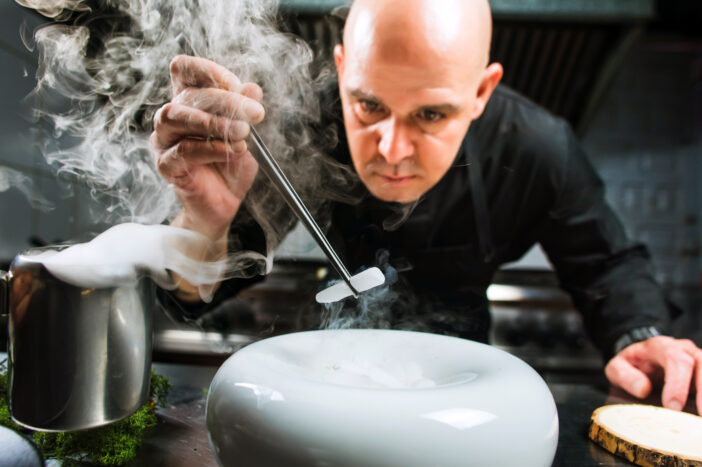
Modernist cuisine has been shaped by culinary innovators who’ve brought science and artistry to the kitchen.
Ferran Adria and the Legacy of El Bulli
- Revolutionized culinary world with El Bulli.
- Introduced techniques like spherification and foams.
- Pioneered a deconstructionist approach to dishes.
Grant Achatz and the Innovations at Alinea
- Known for creating multi-sensory dining experiences.
- Alinea’s menu features dishes that change form and flavor.
- Utilizes techniques like helium balloons and edible films.
Heston Blumenthal and His Scientific Approach
- Celebrated for blending food science and culinary art.
- The Fat Duck’s menu offers dishes with unexpected textures and flavors.
- Popularized molecular gastronomy with techniques like multi-sensory cooking and food pairing.
These chefs have pushed the boundaries of what’s possible in the kitchen, redefining the dining experience.
Popular Modernist Cuisine Recipes
Modernist cuisine offers a twist on traditional dishes, transforming them into extraordinary culinary experiences.
Deconstructed Caprese Salad
You deconstruct the classic Caprese salad into a visual and flavorful masterpiece. Use tomatoes in various textures, mozzarella foam, and basil gel to reconstruct the ingredients. Add aged balsamic pearls to elevate the presentation and taste.
Carbonated Mojito Spheres
You encapsulate a classic mojito using spherification techniques to create burst-in-your-mouth experiences. Mix rum, mint, lime, and a spherification agent. Use calcium chloride for the bath to carbonate the spheres, giving a fizzy sensation reminiscent of the original cocktail.
Transparent Ravioli
You surprise diners with ravioli made from transparent pasta sheets. Craft these sheets from gelatin or agar-agar. Fill them with vibrant ingredients like vegetable purees or seafood mousses. Serve them with a delicate broth to enhance the flavor profile and reveal the hidden fillings.
Modernist Cuisine at Home
Bringing modernist cuisine into your home is easier than you might think. Here’s how to get started.
Starter Kits and Where to Find Them
- Choose a starter kit to get all the essential tools. Popular kits include the Modernist Pantry Beginner’s Kit and the Molecule-R Starter Kit.
- Find these kits on websites like Amazon and the Modernist Pantry store for convenience and variety.
Simple Recipes to Try at Home
- Try Spherified Olive Balls using sodium alginate and a simple calcium chloride bath.
- Cook Sous Vide Steak with a precision cooker for perfect doneness every time.
- Make Foamed Chocolate Mousse using an ISI siphon and nitrous oxide cartridges for an airy texture.
Impact of Modernist Cuisine on the Culinary World
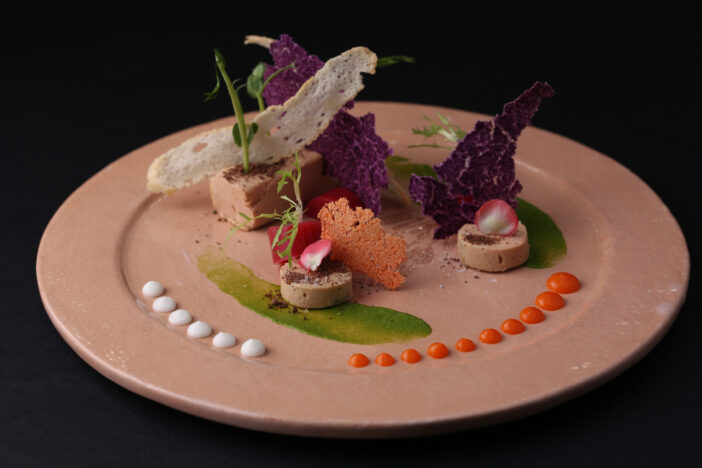
Modernist cuisine’s fusion of science and art is transforming dining and education in the culinary field.
Changing Dining Experiences in Restaurants
Modernist techniques are reshaping the restaurant scene.
- Elevated Expectation: Diners now look for multi-sensory experiences, not just taste.
- Innovative Techniques: Chefs use molecular gastronomy to create unique textures and flavors.
- Interactive Dining: Restaurants serve interactive dishes, like liquid nitrogen ice cream, engaging all senses.
- Artistic Presentation: Plating has become an art form, influencing how food is perceived and enjoyed.
Influence on Culinary Education
Modernist cuisine is also shifting how chefs are trained.
- New Curriculum: Culinary schools are adding modules on molecular gastronomy and advanced techniques.
- Technology Integration: Students learn to use equipment like sous vide machines and pacojets, preparing them for modern kitchens.
- Emphasis on Science: Understanding food science is now critical, teaching future chefs the “why” behind cooking methods.
- Creativity Encouraged: Innovation and experimentation are encouraged, fostering a new generation of creative chefs.
Frequently Asked Questions
What is modernist cuisine?
Modernist cuisine is a style of cooking that uses science and technology to create innovative dishes. Techniques like sous vide and spherification are commonly used to transform traditional recipes.
Who are some renowned chefs known for modernist cuisine?
Chefs like Ferran Adria and Grant Achatz are pioneers in modernist cuisine. They are celebrated for their creative approaches and innovative techniques that challenge traditional cooking methods.
Can you give examples of modernist cuisine recipes?
Yes, examples include Deconstructed Caprese Salad and Carbonated Mojito Spheres. These recipes reimagine classic dishes using modernist techniques to create unique dining experiences.
How has modernist cuisine impacted the restaurant industry?
Modernist cuisine has elevated dining experiences with innovative techniques, interactive dining, and artistic presentations. It has set higher expectations for culinary creativity and dining enjoyment in restaurants.
How is modernist cuisine influencing culinary education?
Culinary education now incorporates modernist techniques in training, updates curricula, integrates technology, emphasizes food science, and encourages creativity among aspiring chefs.
Is it possible to practice modernist cuisine at home?
Yes, with starter kits and simple recipes, home cooks can experiment with modernist techniques. This makes it accessible for those interested in exploring this creative style of cooking.






